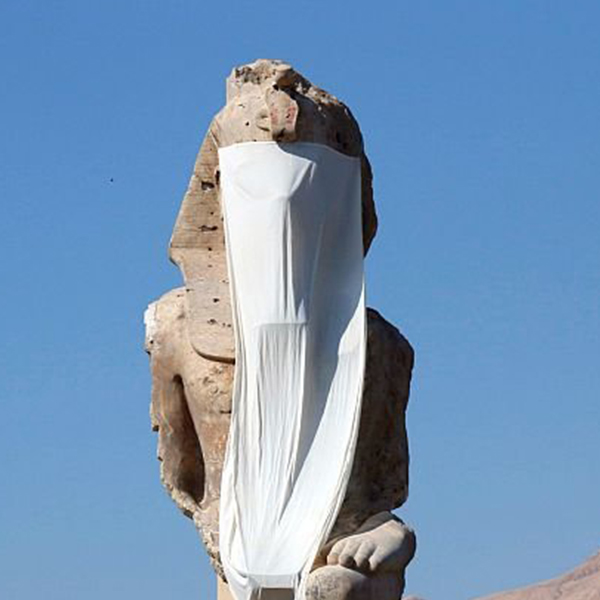
Pompeii Ruins at Dusk (Photo: Darryl Brooks via Shutterstock )
The ancient city of Pompeii, Rome, is one of the most fascinating archaeological sites in the world. Located just outside of Naples in southern Italy, Pompeii is renowned for its well-preserved Roman ruins—and the disaster that ironically left them intact.
Following a cataclysmic volcanic eruption, the entire city was covered by a blanket of volcanic ash. Until the 18th century, the city remained buried by this dust, leaving it untouched—and unseen—for nearly 1,700 years.

A wall painting from the House of the Centenary in Pompeii shows the earliest known depiction of Mount Vesuvius. (Photo: Wikimedia Commons, Public domain)
Pompeii's History
Prior to the eruption, Pompeii was a vibrant Roman center. Likely founded in the 7th or 6th century BCE by the Osci people from central Italy, it had a colorful history during its short existence.
The city was controlled by a string of conquerors, including the Greeks, Etruscans, and the Samnites, before becoming a Roman colony in 80 BCE. Under Roman rule, the town played an important role in trade and commerce due to its proximity to both the Mediterranean basin and strategic roads built by the Romans. Additionally, ash from Mount Vesuvius, a nearby volcano, made the land especially fertile.
During this time, the city flourished. In particular, Pompeiians made advancements in art—namely, frescoes—and architecture, with important construction projects ranging from an amphitheater to an aqueduct. Wealthy inhabitants lived in elegant houses and elaborate villas while regular townspeople and enslaved people visited artists' shops, cafes, brothels, public baths, a forum, and taverns. There was a 20,000-seat arena and open-air markets.
By the time catastrophe struck, the city boasted a population between 12,000 and 15,000 people.

William Turner, “Vesuvius in Eruption” (ca. 1817-1820) (Photo: Google Art Project via Wikimedia Commons, Public domain)
The Eruption
Before Mount Vesuvius erupted in either late August or October 79 CE, Pompeii had experienced a chain of small earthquakes. As the city's residents had grown accustomed to minor tremors caused by the volcano, many of them did not feel threatened by the seismic activity.
However, after a few days of quakes, the volcano violently erupted. The blast was so high that it could be seen for hundreds of miles. Pliny the Younger, a Roman writer, described the scene as witnessed from the Bay of Naples:
“Broad sheets of flame were lighting up many parts of Vesuvius; their light and brightness were the more vivid for the darkness of the night . . . it was daylight now elsewhere in the world, but there the darkness was darker and thicker than any night.”
Pliny went on to describe the shape of the blast, comparing the cloud to a pine tree that “rose to a great height on a sort of trunk and then split off into branches.” As the debris cooled, it floated to the surface. First, it was a fine-grain ash, and then lapilli, fragments of pumice stone. As this happened, people had time to flee the city, and many did. Those who didn't leave had to contend with conditions that grew increasingly worse. Ash clogged the air, and the weight of it caused buildings to collapse.
Things didn't improve and got much worse the following morning. At this time, a pyroclastic flow, a rapid current of hot gas and volcanic matter, erupted from the mountain and killed everyone and everything in its path. It's reported that 2,000 people died, and it brought life in Pompeii to a permanent standstill.
Other cities

The black cloud represents the general distribution of ash and cinder to the affected cities near Mount Vesuvius (Photo: Wikimedia Commons, CC BY-SA 4.0)
In addition to Pompeii, the eruption of Mount Vesuvius covered other ancient Roman towns, including Herculaneum, Oplontis, and Stabiae. Herculaneum was Pompeii's smaller and wealthier sister city. It was spared from the first stage of the eruption due to a westerly wind, allowing precious time for the inhabitants to flee and minimizing the damage to the town's infrastructure. Additionally, unlike Pompeii, the ash that covered Herculaneum carbonized, thereby preserving the wood of roofs, beds, and doors, as well as keeping organic material like food.
Excavations
For centuries, Pompeii was forgotten. While in the 16th century, Pompeiian frescoes were discovered by an Italian architect, it was not until 1748 that the site was properly unearthed.

The Hall of the Mysteries in Pompeii (Photo: Lord Pheasant via Wikimedia Commons, Public domain)
It was during these excavations that archaeologists realized the ruins' remarkable level of preservation, with entire buildings, objects—including, amazingly, uncooked loaves of bread in an oven—and beautiful, polychromatic wall paintings left intact. These frescoes include some of the earliest known still-life depictions, as well as secular portraits, religious iconography, and erotic imagery.
In addition to architecture and artifacts, archaeologist Giuseppe Fiorelli discovered human-shaped voids in the ash in 1863. Once molded around bodies, these cavities have since been filled with plaster and, more recently, resin, to create casts of the victims. In addition to human infants, children, and adults, these casts also include unlucky animals, such as wild boars and domesticated dogs.
Pompeii Today
Today, archaeologists and scientists continue to unravel the mysteries of Pompeii. Recently, they have started taking CAT scans of the plaster and resin casts, getting a glimpse of the remains within them. “We are going to know a lot about the victims of Pompeii,” archaeological superintendent of Pompeii Massimo Osanna said. “Their age, sex, what they ate, what diseases they had, and their social class.”
New discoveries mean the historical narratives of Pompeii continue to evolve. While it's widely accepted that Pompeii was frozen in time, Steven Tuck at Miami University has evidence to the contrary.
“The story of the eruption of Mount Vesuvius is no longer one about annihilation; it also includes the stories of those who survived the eruption and went on to rebuild their lives,” he explains. Tuck spent eight years “scouring databases of tens of thousands of Roman inscriptions on places ranging from walls to tombstones” and found that there were more than 200 survivors in 12 cities.
Pompeii is popular with the public. Every year, 2.5 million people visit the UNESCO World Heritage site, where they can see the ancient city for themselves and stand in the shadow of the ever-looming Mount Vesuvius.

Photo: Kelly Richman-Abdou / My Modern Met
Frequently Asked Questions
Why is Pompeii so famous?
Pompeii is famous because it was remarkably well-preserved under volcanic ash following the eruption of Mount Vesuvius in 79 CE.
How many survived in Pompeii?
New research has found evidence of over 200 survivors in 12 cities.
How was Pompeii discovered?
Pompeii was discovered by an Italian architect in the 16th century, but not properly unearthed until the 1740s.
This article has been edited and updated.
Related Articles:
Nearly Life-Sized Relief Sculptures in Exceptional Condition Discovered in Pompeii
Long-Lost Renaissance Masterpiece by Famous Artist Andrea Mantegna Has Resurfaced in Pompeii
Newly Discovered Pompeii Frescoes Reveal a Different—Wild—Side of Ancient Roman Women























































































